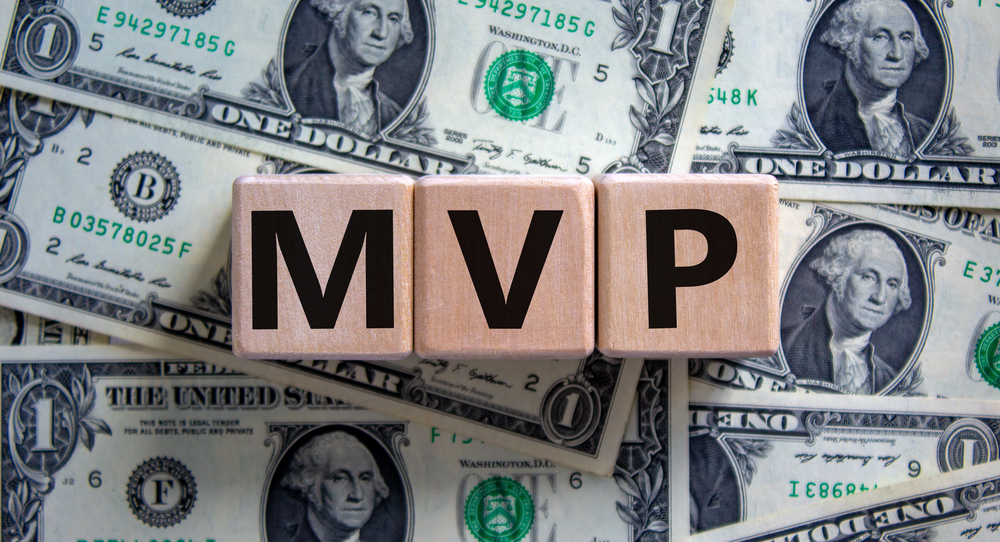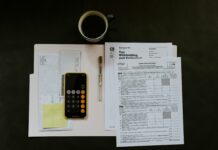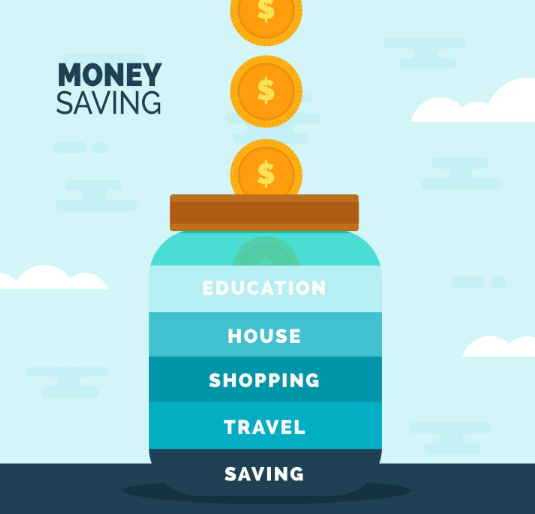What Are Money Management Handouts?
Money management handouts are printable or digital worksheets that help individuals and small business owners track, plan, and improve their financial habits.
They act as visual financial roadmaps, breaking down complicated money decisions into clear, organized steps — like budgeting, expense tracking, saving goals, and debt repayment.
In short:
These handouts make money visible, measurable, and manageable.
Why Money Management Handouts Matter in 2026
With inflation, rising living costs, and digital transactions happening everywhere, most people underestimate how much they actually spend.
That’s why structured tools — like budget handouts and expense trackers — are essential for maintaining financial stability.
Benefits include:
-
Financial Clarity: See exactly where your income and expenses go.
-
Goal-Setting Made Simple: Define and visualize targets like saving $1,000 or paying off a loan.
-
Behavior Tracking: Monitor spending patterns over time.
-
Less Stress, More Control: Reduces anxiety around money decisions.
Statistic: According to a 2026 Mint survey, 68% of people using budgeting templates improved their savings within six months.
Top Money Management Handouts You Can Use
Free Printable Money Management Handouts
| Handout Type | Best For | Format | Difficulty |
|---|---|---|---|
| Monthly Budget | Beginners | Fillable PDF | Easy |
| Debt Snowball | Credit card debt | Printable Worksheet | Medium |
| Expense Tracker | Identifying leaks | Spreadsheet | Easy |
| Savings Goal | Visual learners | Color-coded Chart | Easy |
| Net Worth | Advanced planning | Quarterly Tracker | Hard |
1. Monthly Budget Template
A budget planner is the backbone of financial control.
-
Track income, expenses, and savings goals.
-
Color-code by category (e.g., essentials vs. wants).
-
Example tools: Google Sheets, Excel, or Canva templates.
Pro Tip:
Include a “planned vs. actual” column to identify where your budget goes off track.
2. Expense Tracker Sheet
Daily expense tracking helps identify money leaks.
-
Record every purchase, even small ones.
-
Review weekly to find patterns.
Example: Sam, a freelancer, used an expense tracker to find $150/month in forgotten subscriptions — and redirected it toward savings.
3. Savings Goal Planner
Visual progress builds motivation.
-
Add columns for goal description, target amount, timeline, and current balance.
-
Use progress bars or visual trackers.
| Goal | Target | Deadline | Progress |
|---|---|---|---|
| Emergency Fund | $3,000 | 6 months | ████░░░ 65% |
| Vacation | $1,200 | 3 months | ██░░░░ 30% |
4. Debt Repayment Organizer
Organize loans, credit cards, and repayment plans.
-
Use the avalanche method (highest interest first) or snowball method (smallest balance first).
-
Update monthly to visualize debt reduction.
Example: “Credit Card A – $1,200 → $800 in 2 months” keeps you motivated.
5. Emergency Fund Tracker
Life is unpredictable. Use this handout to:
-
Calculate 3–6 months of living expenses.
-
Track deposits monthly.
-
Keep it visible to maintain focus on your safety net.
Customizing Your Money Management Handouts
A one-size-fits-all worksheet rarely works. Tailor each handout using these simple adjustments:
-
For Students
Add columns for scholarships, part-time income, tuition, campus expenses. -
For Families
Include childcare, tuition, meal planning, family subscriptions, medical savings. -
For Small Business Owners
Add profit/loss tracking, quarterly tax estimates, deductible expense categories. -
For Retirement Planning
Insert investment tracking, dividend income, allocation percentages, long-term goals.
Customization makes the handouts more realistic and increases the chance you’ll use them consistently.
How to Use Money Management Handouts: A Step-by-Step Guide
-
Choose the Right Template: Select handouts that fit your financial goals.
-
Fill in Your Income and Expenses: Be honest and detailed.
-
Set Goals and Deadlines: Include short-term, medium-term, and long-term objectives.
-
Update Regularly: Weekly updates ensure accuracy.
-
Analyze Patterns: Identify overspending, areas for savings, and opportunities to invest.
Pro Tip: Combine multiple handouts for a complete financial overview.
Implementation Roadmap: Your 30-Day Starter Plan
Week 1: Download, print, or save all handouts
Week 2: Track every expense (no skipping small purchases)
Week 3: Review patterns + highlight problem categories
Week 4: Set 3 financial goals (1 short-term, 1 medium-term, 1 long-term)
Month 2: Refine templates, adjust categories, and create new goals
Expert Tips for Effective Money Management
1. Track Every Dollar (Yes, Every Single One)
- How much you earn (salary, side hustles, passive income).
- How much do you spend (bills, food, subscriptions, shopping)?
2. Apply the 50/30/20 Rule
- 50% Needs: Rent, groceries, utilities, transportation.
- 30% Wants: Dining out, shopping, Netflix, vacations.
- 20% Savings/Debt Repayment: Emergency fund, investments, or paying down loans.
3. Build an Emergency Fund (Your Safety Net)
4. Cut Hidden Expenses
- Unused subscriptions (gym, streaming, apps).
- High-interest credit cards.
- Eating out too often.
- Energy waste at home (forgotten lights, overusing AC/heater).
5. Use the Envelope Method
6. Pay Yourself First
7. Think Long-Term (Invest, Don’t Just Save)
- Start with retirement accounts (401k, IRA).
- Learn about index funds or mutual funds.
- Avoid “get rich quick” schemes.
8. Set Clear, Reachable Goals
- Save $500 in 3 months.
- Pay off $1,000 of debt by the end of the year.
- Build a $5,000 emergency fund in 2 years.
9. Keep it Visual
- “Don’t save what is left after spending, spend what is left after saving.” – Warren Buffett
10. Review & Adjust
Case Studies & Examples
Case Study 1: John, a freelancer, used budgeting worksheets to track his income and expenses. Within six months, he increased savings by 25% by identifying unnecessary expenditures.
Case Study 2: A small retail business implemented cash flow trackers for revenue and invoices. They reduced late payments by 40% and improved overall financial management.
Digital vs Printable Money Management Handouts
Digital (Google Sheets, Excel, Notion):
-
Auto-calculates totals
-
Easy to update
-
Ideal for mobile tracking
-
Integrates with apps
Printable:
-
Better for visual/kinesthetic learners
-
Great for sticking on walls, fridges, notebooks
-
No tech required
-
Better for daily mindful tracking
Most people benefit from using both—digital for tracking, printable for planning.
Trends & Digital Tools 2026
- Digital Handouts: Google Sheets, Excel templates, and budgeting apps.
- Automation: Expense trackers that automatically sync with bank accounts.
- Mobile Access: Apps allowing budget management on-the-go.
- Integration: Handouts integrated with accounting software for small businesses.
Expert Tips & Insights
“Money management handouts aren’t about perfection — they’re about progress. Tracking your habits gives you the power to improve them.”
— Jane Smith, Certified Financial Planner (CFP)
“Start small, stay consistent, and your financial clarity will grow with your discipline.”
— Richard Henderson, Publisher, Home Business Magazine
Final Thoughts
So, why not create one today? Start small, print it out, and make money management part of your day-to-day practice.
Future you will thank you.
FAQs:
How do I tailor money-management handouts for different learning styles (visual, auditory, kinesthetic)?
• Visual learners: Use charts, infographics, color-coded budgets, and diagrams.
• Auditory learners: Pair the handout with discussions, podcasts, or recorded walkthroughs.
• Kinesthetic learners: Include fill-in-the-blank worksheets, budget tracking exercises, or role-play money scenarios.
What are digital vs print handouts: what are the pros, cons, and cost considerations?
• Digital handouts: Easy to update, low-cost, eco-friendly, and accessible on devices. But they require internet or tech access, and some learners may not engage well without paper.
• Print handouts: Tangible, easier for note-taking, no tech needed. But printing costs (paper, ink) add up and they’re less eco-friendly.
How can educators or students measure whether these handouts are working (i.e. assessing impact)?
You can measure impact by checking if habits change after using the handouts — for example, more students start budgeting, tracking spending, or saving regularly. Educators can use quick surveys, reflections, or before-and-after worksheets to see improvements in knowledge and confidence. Tracking small behavior changes over time is the best way to know the handouts are making a difference.
Why do handouts talk about “tracking spending”?
Tracking spending means writing down or recording everything you buy. It helps you see where your money goes so you can cut back on things you don’t really need.
What’s an “emergency fund” and how much should I save?
An emergency fund is money set aside for unexpected expenses like car repairs or medical bills. A good rule is 3–6 months of living costs, but even $500–$1,000 can be a good start.
Find a Home-Based Business to Start-Up >>> Hundreds of Business Listings.

















































